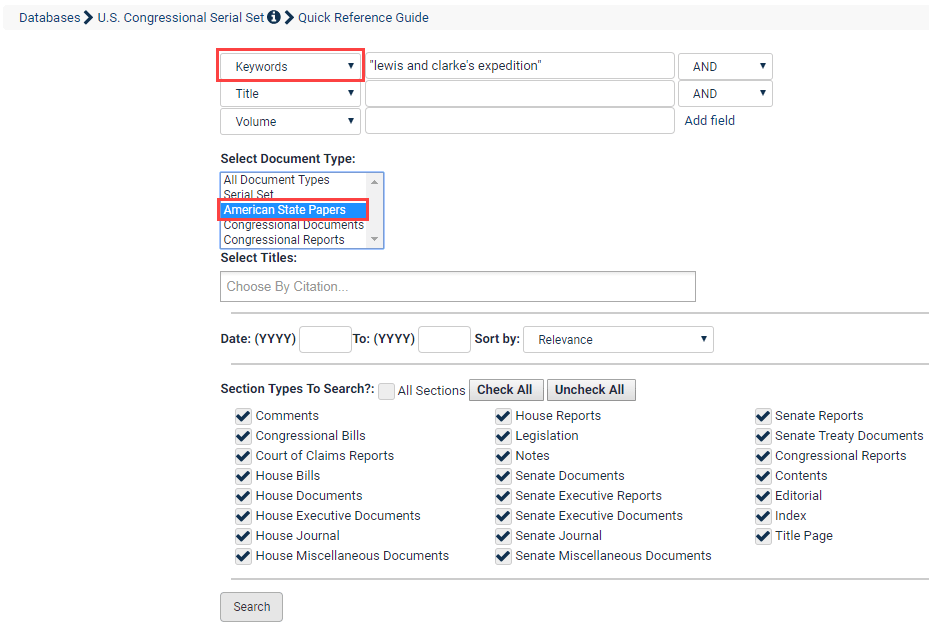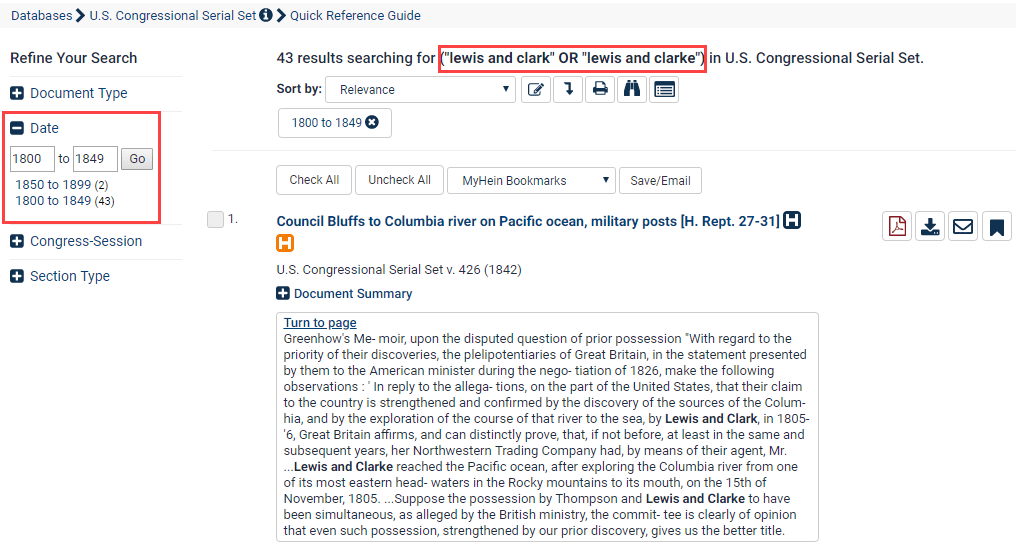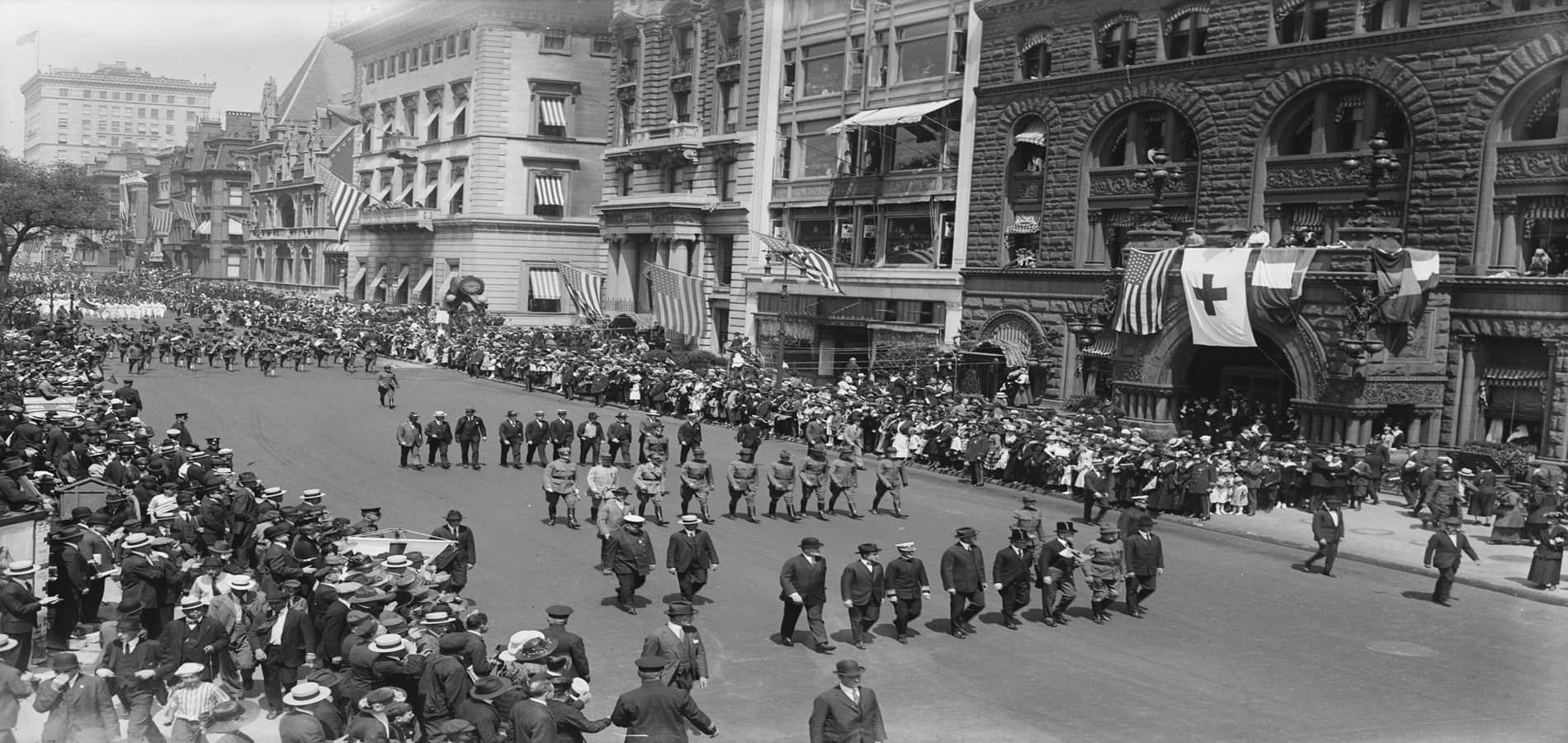HeinOnline is pleased to introduce Secrets of the Serial Set, a series of monthly blog posts dedicated to unveiling the wealth of American history found in the United States Congressional Serial Set. Anyone familiar with the Serial Set has some idea of the hidden gems just waiting to be unearthed. For those unfamiliar, prepare to be blown away by what the Set has to offer. Join us each month to explore notable events in U.S. history using the primary sources themselves.
About the Serial Set
The United States Congressional Serial Set is considered an essential publication for studying American history. Spanning more than two centuries with more than 17,000 bound volumes, the records in this series include House and Senate Documents, House and Senate Reports, and much more. Documents cover a wide variety of topics, including reports of executive departments and independent organizations, reports of special investigations made for Congress, and annual reports of non-governmental organizations. The Serial Set began publication in 1817 with the 15th Congress, 1st session. U.S. Congressional Documents prior to 1817 are published as the American State Papers.
The Serial Set in HeinOnline
The Serial Set is an ongoing project in HeinOnline with the goal of adding approximately four million pages each year until the archive is completed. Since introducing the Set to HeinOnline in October 2018, more than 2.3 million pages and more than 2,900 volumes have been added. HeinOnline currently includes:
- Complete indexing of the more than 17,000 volumes of the Serial Set
- Full 40-year (1978-2018) content archive in HeinOnline’s image-based PDF format
- Complete coverage of the American State Papers
- 86% of the Serial Set available in HeinOnline or via links to HathiTrust Digital Library
Learn more about HeinOnline’s Serial Set (including pricing, what’s included, and how to contribute) by following the link below:
The Lewis and Clark Expedition
Many people may imagine the Lewis and Clark expedition as a pair of rugged cowboys traversing the American West in pursuit of adventure and a great story. In reality, the expedition was a federally funded military project with economic and political goals. After acquiring the Louisiana Purchase in 1803, President Thomas Jefferson proposed the expedition to Congress with the intent of (1) discovering a direct water route to the Pacific Ocean, (2) establishing U.S. presence in lands occupied by Indian tribes, (3) claiming the Pacific Northwest and Oregon before other Europeans, and (4) recording the resources and geography of the area. With a $2,500 grant from Congress, Jefferson commissioned a group of army volunteers, later known as the Corps of Discovery, appointing his own personal secretary, Captain Meriwether Lewis, as the group’s leader. Lewis would go on to select Second Lieutenant William Clark(e)* as his partner.
Lewis and Clark recruited healthy, single men with excellent hunting prowess and survival skills to participate in the two-year trek. After extensive training, the group of more than forty men gathered in St. Charles, Missouri and embarked on their expedition on May 21, 1804. The Corps traveled along the Missouri River through what is now Missouri, Nebraska, the Dakotas, Montana, Idaho, and Washington state. Throughout their journey, the expedition distributed Indian Peace Medals–specially prepared silver medals sporting a portrait of President Jefferson–as a symbol of friendship.
In November of 1804, the expedition was traveling through North Dakota when they encountered fur-trapper Toussaint Charbonneau and his two wives, one of whom was a Shoshone woman named Sacagawea. After being hired as the expedition’s interpreters, Charbonneau and his wives traveled with them for thousands of miles. Sacagawea helped establish peaceful contact with various Indian nations and, at one point, rescued Lewis and Clark’s journals and records from a boat which had capsized. These records would later be presented to Congress as evidence of a successful expedition and would ultimately be preserved in the U.S. Congressional Serial Set.
The expedition succeeded in its objective to reach the Pacific Ocean a year later, mapping the land and recording its flora and fauna along the way. In addition, the Corps established relations with more than two dozen Indian tribes, without whose help they could have suffered starvation, disorientation in the endless Rocky Mountain ranges, or a number of other traveling dangers. The accomplishments of the Lewis and Clark expedition thus paved the way for the Oregon Trail in the 1830s, the Gold Rush in the 1840s and 50s, and the establishment of the First Transcontinental Railroad and Yellowstone National Park in the 1860s and 70s.
*The spelling of “Clark” appears in historical documents both with and without a final “e.”
Lewis and Clark in the Serial Set
Following the success of the journey, Thomas Jefferson provided Congress with a progress report of the expedition, offering for its perusal the journals and records of Lewis and Clark, complete with maps of the area, details of the Indian nations encountered, letters from members of the group, and much more. Users can view Thomas Jefferson’s report in HeinOnline’s U.S. Congressional Serial Set database.
From the Serial Set’s home page, select the Advanced Search option, hyperlinked in blue underneath the main search bar. Next to Keywords, type “lewis and clarke’s expedition.” Within the list entitled Select Document Type, choose “American State Papers.” Clicking the search button will bring up the records presented to Congress as the first result.

The Serial Set is a great place to view the records of a specific historical event, but it can also be used to understand contemporary perceptions of the event and its impact on other happenings at the time. From the Serial Set home page, conducting a basic full-text search on “lewis and clark” OR “lewis and clarke” brings up more than 1,000 results. Adjusting the date range to “1800-1849” brings up a host of results which reveal the immediate impact of the Lewis and Clark expedition.

Among many others, the results of this search include:
- Contemporaneous requests for further exploration of the Louisiana Purchase, while waiting for the outcome of Lewis and Clark’s expedition.
- President Thomas Jefferson’s statements regarding U.S. relations with Indian nations, following the expeditions of Lewis and Clark and others.
- A petition that Lieutenant Zebulon Pike, a contemporary explorer, be compensated for his own expeditions, citing the compensation of Lewis and Clark.
- President Andrew Jackson’s message concerning the fur trade and inland trade to Mexico, mentioning the Lewis and Clark expedition of a few decades earlier.
Help Us Complete the Project
If your library holds all or part of the Serial Set, and you are willing to assist us in completing this project, please contact Shannon Hein at 716-882-2600 or shein@wshein.com. HeinOnline would like to give a special thanks to Wayne State University and University of Utah for their generous contributions which resulted in the initial release of the U.S. Congressional Serial Set. We will continue to need help from the library community to complete this project.
Download an Excel file listing the missing volumes of the Serial Set below:
Check back next month to unveil another secret of the U.S. Congressional Serial Set with HeinOnline!
For more great content, connect with us on our social media platforms: Facebook, Twitter, Instagram, and YouTube.



